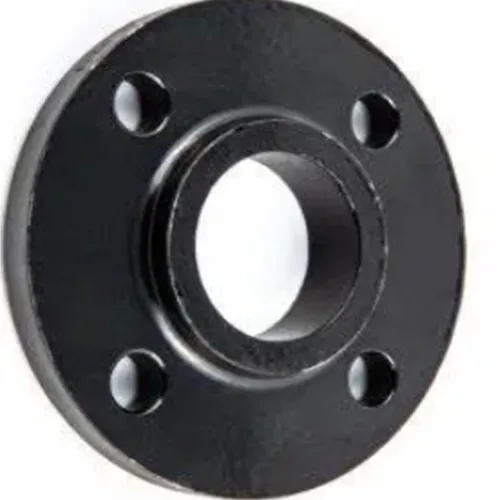-
Cangzhou Yulong Steel Co., Ltd.
-
Phone:
+86 13303177267 -
Email:
admin@ylsteelfittings.com
- English
- Arabic
- Italian
- Spanish
- Portuguese
- German
- kazakh
- Persian
- Greek
- French
- Russian
- Polish
- Thai
- Indonesian
- Vietnamese
- Zulu
- Korean
- Uzbek
- Hindi
- Serbian
- Malay
- Ukrainian
- Gujarati
- Haitian Creole
- hausa
- hawaiian
- Hebrew
- Miao
- Hungarian
- Icelandic
- igbo
- irish
- Japanese
- Javanese
- Kannada
- Khmer
- Rwandese
- Afrikaans
- Albanian
- Amharic
- Armenian
- Azerbaijani
- Basque
- Belarusian
- Bengali
- Bosnian
- Bulgarian
- Catalan
- Cebuano
- China
- China (Taiwan)
- Corsican
- Croatian
- Czech
- Danish
- Esperanto
- Estonian
- Finnish
- Frisian
- Galician
- Georgian
- Kurdish
- Kyrgyz
- Lao
- Latin
- Latvian
- Lithuanian
- Luxembourgish
- Macedonian
- Malgashi
- Malayalam
- Maltese
- Maori
- Marathi
- Mongolian
- Myanmar
- Nepali
- Norwegian
- Norwegian
- Occitan
- Pashto
- Dutch
- Punjabi
- Romanian
- Samoan
- Scottish Gaelic
- Sesotho
- Shona
- Sindhi
- Sinhala
- Slovak
- Slovenian
- Somali
- Sundanese
- Swahili
- Swedish
- Tagalog
- Tajik
- Tamil
- Tatar
- Telugu
- Turkish
- Turkmen
- Urdu
- Uighur
- Welsh
- Bantu
- Yiddish
- Yoruba

Nov . 27, 2024 08:02 Back to list
Slip-On Flange Design and Applications for Efficient Piping Solutions
Understanding the EN 1092-1 Slip-On Flange Applications and Benefits
Flanges are critical components in piping systems, serving as a connection point between pipes, valves, and other equipment. Among the various types of flanges, the EN 1092-1 slip-on flange stands out due to its versatility and ease of installation. This article delves into the characteristics, applications, and benefits of using slip-on flanges in industrial settings.
What is an EN 1092-1 Slip-On Flange?
The EN 1092-1 standard, established by the European Committee for Standardization (CEN), outlines the technical specifications for flanges and their associated accessories. The slip-on flange, specifically, is designed to be slid over the end of a pipe, making it a popular choice for a wide range of applications.
The slip-on flange features a symmetrical design that allows for face-to-face alignment. This design simplicity enables efficient welding, as the flange can be positioned and then welded at both the outer and inner diameters, ensuring a robust and leak-proof connection. Typically made from carbon steel, stainless steel, or alloy materials, these flanges are well-suited for various environments, including those that involve high-pressure and high-temperature conditions.
Applications of the Slip-On Flange
Slip-on flanges are utilized across many industries due to their adaptability. Common applications include
1. Pipelines In oil and gas, water treatment, and chemical processing, slip-on flanges create secure connections that can withstand the rigors of constant flow and pressure changes.
2. HVAC Systems Heating, ventilation, and air conditioning systems often employ slip-on flanges for ductwork and piping connections, where ease of assembly and disassembly is crucial.
4. Power Generation Power plants, including nuclear, fossil fuel, and renewable energy facilities, use slip-on flanges for various piping needs, benefiting from their robust nature.
en 1092 1 slip on flange

Advantages of Using EN 1092-1 Slip-On Flanges
Choosing slip-on flanges offers several advantages
1. Ease of Installation The design simplifies the installation process, allowing for quick alignment and welding. This can significantly reduce labor costs and installation time compared to other types of flanges.
2. Cost-Effective Slip-on flanges are generally more economical than their counterparts like blind or threaded flanges. Their straightforward design reduces production and handling costs, making them an attractive option for budget-conscious projects.
3. Flexibility These flanges can accommodate some misalignment between pipes, which is particularly beneficial in large-scale installations where precise alignment can be challenging.
4. Strength and Durability When properly welded, slip-on flanges provide a robust connection that can handle high pressure and temperature fluctuations. Their resistance to fatigue and wear makes them suitable for long-term applications.
5. Maintenance and Repair Slip-on flanges are easier to remove or replace, facilitating maintenance and repair operations without the need for extensive disassembly.
Limitations
While slip-on flanges offer many benefits, they also have some limitations. For instance, they are not as effective in high-stress applications as other types, such as weld neck flanges. Additionally, because they require welding, they may not be the first choice for environments sensitive to heat or where disassembly is frequent.
Conclusion
In conclusion, the EN 1092-1 slip-on flange is a vital component in many industrial piping systems. Its easy installation, cost-effectiveness, and adaptability to various applications make it a popular choice among engineers and project managers. Although it may not be the solution for every application, for most standard conveyance processes, it provides a reliable and robust solution. As industries continue to evolve, the importance of understanding and utilizing the right components, like slip-on flanges, remains paramount in ensuring the efficiency and safety of piping systems.
Latest news
-
ANSI 150P SS304 SO FLANGE
NewsFeb.14,2025
-
ASTM A333GR6 STEEL PIPE
NewsJan.20,2025
-
ANSI B16.5 WELDING NECK FLANGE
NewsJan.15,2026
-
ANSI B16.5 SLIP-ON FLANGE
NewsApr.19,2024
-
SABS 1123 FLANGE
NewsJan.15,2025
-
DIN86044 PLATE FLANGE
NewsApr.19,2024
-
DIN2527 BLIND FLANGE
NewsApr.12,2024
-
JIS B2311 Butt-Welding Fittings LR/SR 45°/90° /180°Seamless/Weld
NewsApr.23,2024











